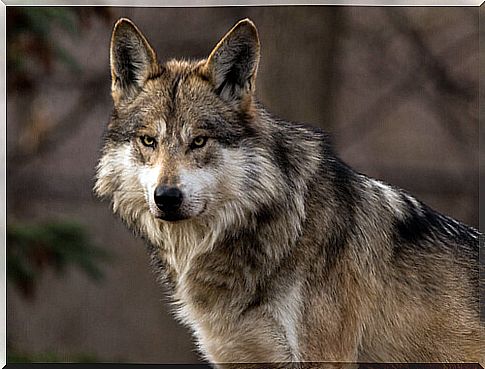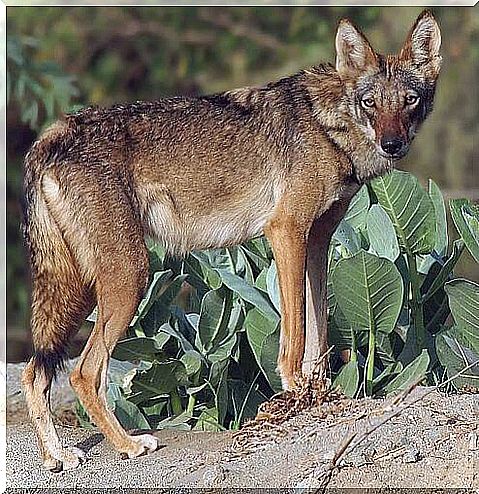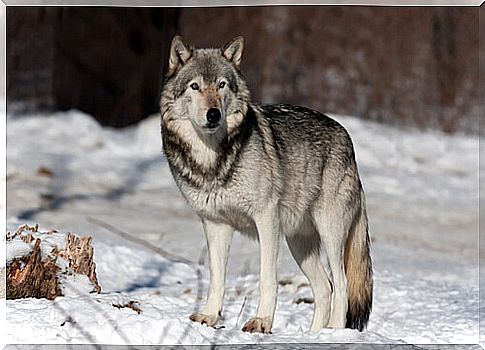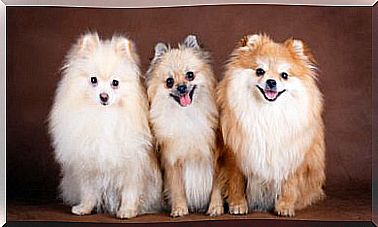6 Races Of Wolves

Canis Lupus is a carnivorous mammal from which the dog is descended. This is common in North America, Eurasia and the Middle East, and today they have limited their habitat due to hunting or forest loss. In this article we will tell you about the wolf breeds that live today.
Characteristics of wolves
It is a predator that has teeth identical to that of dogs, and that inhabits taigas, forests, mountains, grasslands and tundras. Their size and weight depend on the breed, but they range between 60 and 90 centimeters, with a weight of up to 70 kilos.
Wolves can hunt by day or night, and they can walk many miles without getting tired thanks to their vision and smell. In addition, its coat is quite thick and divided into layers: the outer one repels water and humidity, and the second inner one insulates it from the cold. The coloration varies according to the ecosystem where it is found.

At the time of reproducing the gestation lasts approximately two months. At birth, the cubs have darker hair and blue eyes, and are also deaf and blind, so they are 100% dependent on the mother. These live in burrows up to three weeks of age and begin to emerge from it at almost two months.
The wolf is solitary to hunt, it can survive several days without food and its prey can be larger than it: sheep, deer, goats, reindeer, elk, etc. It also eats small species such as hares and rodents.
What breeds of wolves exist?
Within the subspecies or races of wolves we can find that they inhabit places as diverse as the Eurasian zone, Oceania and North America. Some of the best known are:
1. Gray wolf
It weighs around 55 kilos and, although the adjective ‘gray’ is due to its fur, there are also black, white and reddish ones. They have a narrow snout and head in relation to other species and are a little slower than the others.
They will not be the fastest but, on the other hand
, their sharp teeth allow them to penetrate three times deeper than the average canine. It communicates with its herd thanks to different verb forms – including howling – and can adapt to almost any habitat if there is food.
2. Iberian Wolf
As its name suggests, this breed lives in the Iberian Peninsula, mostly north of the Duero River, and it should be noted that the Iberian wolf is currently in danger of extinction.
Morphologically speaking, it is medium in size, measuring about 70 centimeters and weighing about 50 kilos. In addition, its fur has dark spots on the tail, and the head is large and solid, while the ears are triangular and the muzzle has ‘whiskers’. It is a large carnivore that feeds on large mammals and herbivores.
3. Arctic Wolf
This specimen is a subspecies of the gray wolf and its fur is completely white to camouflage itself in the snow. It feeds on caribou and musk oxen, and lives mainly in the freezing areas of Alaska, Greenland and Canada.
In this sense, when living in places of extreme cold, it has an outer layer of skin that becomes fatter when winter arrives. In addition, the ears are small to keep warm and regulate body temperature, while the legs are padded to be able to walk well on snow and ice. It lives in packs and is quite territorial.

4. Arabian wolf
This breed lives on the Arabian Peninsula, mostly in Iraq, Jordan, Egypt, and Israel. With regard to food, it eats hares, sheep, goats and carrion. Their population has expanded after hunting was prohibited in Oman, although they do not form large herds.
Regarding its physical appearance, it is small and greyish in color, it has short and fine fur, and it does not have sweat glands and to control the temperature they use panting.
5. Red wolf
It owes its name to the color of its reddish-brown fur and has a white marking around the mouth, while, on the other hand, the head and ears are large. If we refer to its habitat, this species develops in North and South Carolina (United States).
Regarding his character, it should be noted that he is usually quite sociable but, yes, in the herd he maintains levels of hierarchy. In the reproduction section, this happens between February and March, and the females can give birth to up to 10 cubs. Despite this and, unfortunately, it is another of the wolf breeds in a critical state of extinction.
6. Ethiopian wolf
Lastly, the Ethiopian wolf is confused with jackals due to its physical build and medium size. It has a more pointed snout than other species and its coat can be red, white or brown.
This is a breed exclusive to Africa, whose habitat is located near the mountains and on some plains. Its character is less territorial and aggressive than that of other wolves, it walks in packs of six individuals and it feeds on rodents.
- Among other wolf breeds we highlight the following: Himalayan, Indian, Levantine, Italian, Romanian, Russian, Steppe, Tibetan, Honshu, Mexican, Newfoundland, prairie and American tundra.
It might interest you …
Image source: DocTaxon and Ahmad Qarmish12









